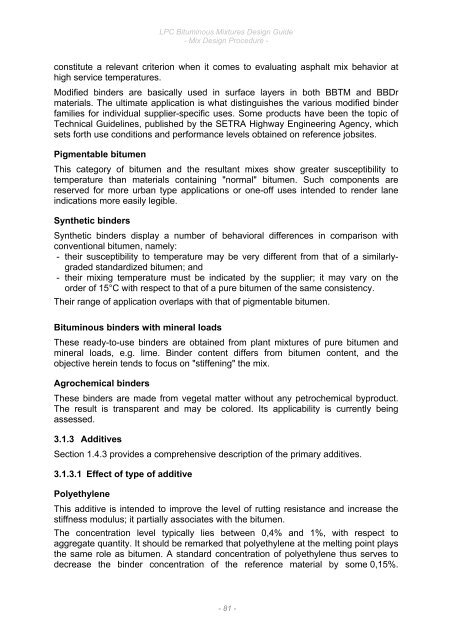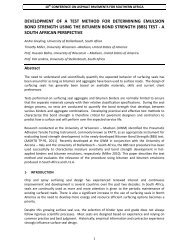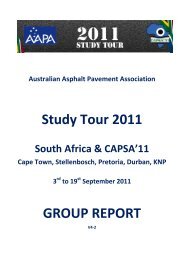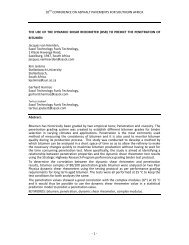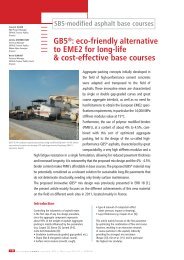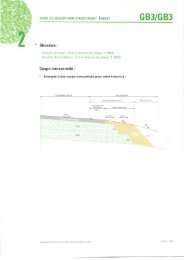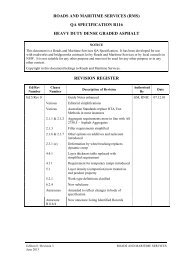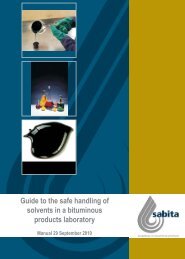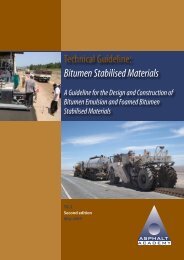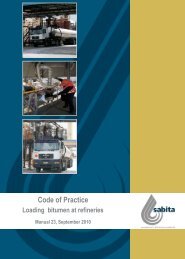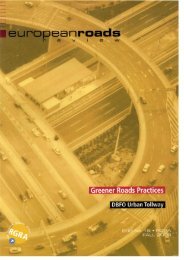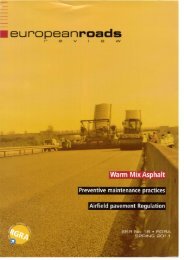6. LPC Bituminous Mixtures Design Guide, Sept 2007. - Aapaq.org
6. LPC Bituminous Mixtures Design Guide, Sept 2007. - Aapaq.org
6. LPC Bituminous Mixtures Design Guide, Sept 2007. - Aapaq.org
Create successful ePaper yourself
Turn your PDF publications into a flip-book with our unique Google optimized e-Paper software.
<strong>LPC</strong> <strong>Bituminous</strong> <strong>Mixtures</strong> <strong>Design</strong> <strong>Guide</strong>- Mix <strong>Design</strong> Procedure -constitute a relevant criterion when it comes to evaluating asphalt mix behavior athigh service temperatures.Modified binders are basically used in surface layers in both BBTM and BBDrmaterials. The ultimate application is what distinguishes the various modified binderfamilies for individual supplier-specific uses. Some products have been the topic ofTechnical <strong>Guide</strong>lines, published by the SETRA Highway Engineering Agency, whichsets forth use conditions and performance levels obtained on reference jobsites.Pigmentable bitumenThis category of bitumen and the resultant mixes show greater susceptibility totemperature than materials containing "normal" bitumen. Such components arereserved for more urban type applications or one-off uses intended to render laneindications more easily legible.Synthetic bindersSynthetic binders display a number of behavioral differences in comparison withconventional bitumen, namely:- their susceptibility to temperature may be very different from that of a similarlygradedstandardized bitumen; and- their mixing temperature must be indicated by the supplier; it may vary on theorder of 15°C with respect to that of a pure bitumen of the same consistency.Their range of application overlaps with that of pigmentable bitumen.<strong>Bituminous</strong> binders with mineral loadsThese ready-to-use binders are obtained from plant mixtures of pure bitumen andmineral loads, e.g. lime. Binder content differs from bitumen content, and theobjective herein tends to focus on "stiffening" the mix.Agrochemical bindersThese binders are made from vegetal matter without any petrochemical byproduct.The result is transparent and may be colored. Its applicability is currently beingassessed.3.1.3 AdditivesSection 1.4.3 provides a comprehensive description of the primary additives.3.1.3.1 Effect of type of additivePolyethyleneThis additive is intended to improve the level of rutting resistance and increase thestiffness modulus; it partially associates with the bitumen.The concentration level typically lies between 0,4% and 1%, with respect toaggregate quantity. It should be remarked that polyethylene at the melting point playsthe same role as bitumen. A standard concentration of polyethylene thus serves todecrease the binder concentration of the reference material by some 0,15%.- 81 -


